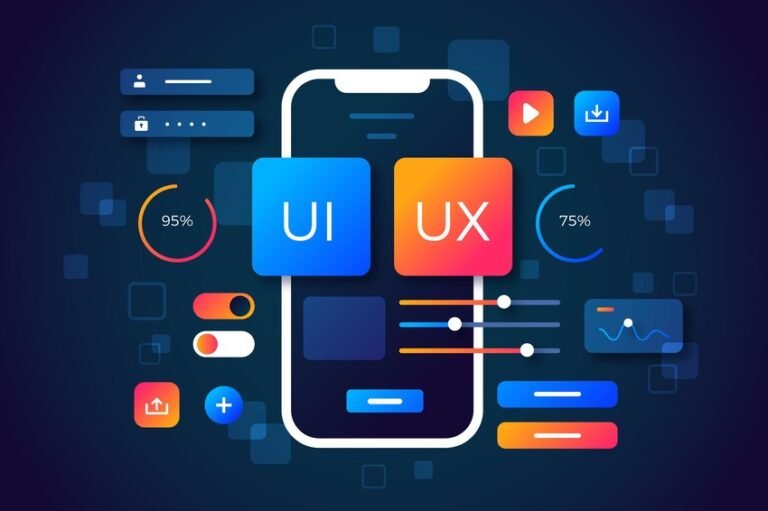With the current context of contemporary web design and development, the success of any web application will hinge decidedly on strong UI and UX design. It boils down to good user experience and ultimately a very significant influencer in terms of how consumers view your software. Even if your app has a plethora of features and very high-performance capabilities, in no way will you have sufficient users or meet expectations concerning user engagement when your app has been done with a very potent UI/UX design. The truth is that people of today appreciate clean consistent, responsive, and well-aesthetic UI/UX supporting easy use. And the same reason why many flop apps go before the customers.
The good news is that if you make use of the right tools and comply with the best UI/UX design practices, building such a design isn’t so challenging. With UI frameworks, for example, you can design an attractive, responsive user interface with a simple, harmonious style. Better yet, a UI framework helps speed up web development and lets you build stunning UI/UX designs faster.
This post will give you ten practical ideas for improving the UI/UX of your web application as well as providing unique, interesting experiences to your users. Let’s get started.
Knowledge of Your Audience
Know who your target audience is first and foremost when developing an amazing UI/UX design or when refining one already in place. This will help bring a seamless user experience in line with the needs and expectations of users.
Doing deep research is very important to understand your target audience and learn about their demographics, interests, preferences, and behavior. These details can be used later on to develop user personas and inform system design choices. Using user research tools like surveys, interviews, and persona-building tools can help you understand your target audience.
Planning to Prioritize The Content
Clarity and concentration can be kept up by content planning and giving priority to the content you want to present in your user interface. Content planning means identifying the information the users need to be displayed before them. Setting a content hierarchy is also very essential in prioritizing content in accordance with the needs of the users and corporate goals to be exceptionally highlighted.
Applying Responsive Design
As it is the present digital era and most web traffic comes from mobile devices, an agile UI/UX design is an urgent requirement. Responsive designs adapt to very wide varieties of screen sizes and gadgets with laptops, tablets, and smartphones. In other words, your design must adapt its content, layout, and functionality according to the device used and the viewport. In addition to improving customer pleasure and experience, a responsive design increases the usability and accessibility of your software.
Media queries and flexible grids create responsive design and ensure the consistency of different displays. For example, you can use media queries to specify several layouts and styles that you can apply in relation to the type of device your user will be using, the size of the screen, whether he is in landscape or portrait mode, etc.
Maximize Page Load Speed
Users today want quick access to information and services. Additionally, studies and surveys have proven that people do not have much patience for slow websites and online applications. Users tend to get irritated quickly and move away from a website if it is taking too long to load. It also results in increased bounce rates. Hence, one really cannot exaggerate the way poor loading times harm a user’s experience. Some of the most efficient ways by which image optimization can speed up web page loading times would include the use of CDN to deliver images, caching, and minification.
Guarantee Design Consistency
When you’re designing user interfaces, then all your UI components ought to be uniform in a web application. A predictable as well as comfortable user experience is made possible by a uniform UI/UX design. It promotes the usability of the software and makes it quick and simple for the users to learn how to operate the interface. It follows with an overall positive experience from the user.
Producing a consistent design in an application may involve using the same color scheme, font, and visual style throughout.
Prioritize Accessibility and Readability
Besides being a good design practice, it is also the moral responsibility of UI/UX designers to make their designs readable and accessible. This should ensure that many users including people with disabilities such as visual or cognitive impairment, and motor difficulty, can access your online application. Thus, accessible design gives inclusive and user-friendly digital experiences.
Restructure User Inputs
Users may complete activities quickly and hassle-free when your program streamlines user inputs. Additionally, it reduces user errors like typos and improper selections.
Interactivity and Visual Feedback
Another critical component that contributes to a successful UI/UX design is offering visual feedback for actions users undertake. This ensures the application receives and processes the action performed by the user. This, in turn, increases users’ trust in the process and the entire experience. Some potent and efficient ways of visual feedback are hover effects, animations, and transitions.
Implement User Testing
A useful technique to make sure your interface functions as intended is to test your UI/UX with actual users. By evaluating usability problems and collecting feedback, it enables you to make adjustments and improve the functionality of your user interface. A/B testing and usability testing are two popular testing techniques. While A/B testing, also known as split testing, compares several iterations of a web page to determine which one best achieves the desired results, usability testing evaluates the whole user experience.
Implement a UI Library or UI Framework
It is intimidating and time-consuming to start from scratch with a UI design. For example, it is usually hard to make a responsive design or to have design consistency. This is where UI frameworks come in handy. UI frameworks are an affordable way to create user interfaces more quickly. These frameworks offer pre-written code libraries and functions or pre-built UI components for common UI/UX tasks.
Conclusion
A good UI/UX design is the foundation of modern websites and web apps. It enhances user satisfaction, experience, and engagement. This post covered ten effective practices to enhance the UI/UX design of your app. Using a UI framework is helpful if you want to create visually appealing, responsive, and consistent user interfaces more quickly. An excellent framework will give you a gorgeous, well-maintained, and consistent design along with the use of pre-built UI components that are responsive and high-performing.
Frequently Asked Questions (FAQs)
What is the main purpose of UI design?
It supports user interaction with your app.
What is the significance of UX?
It helps to enhance user satisfaction and engagement.
What are some popular UI frameworks?
Angular, React, and Ext JS
Diginatives creates the best UI/UX development solutions; if you want such services please contact us.






